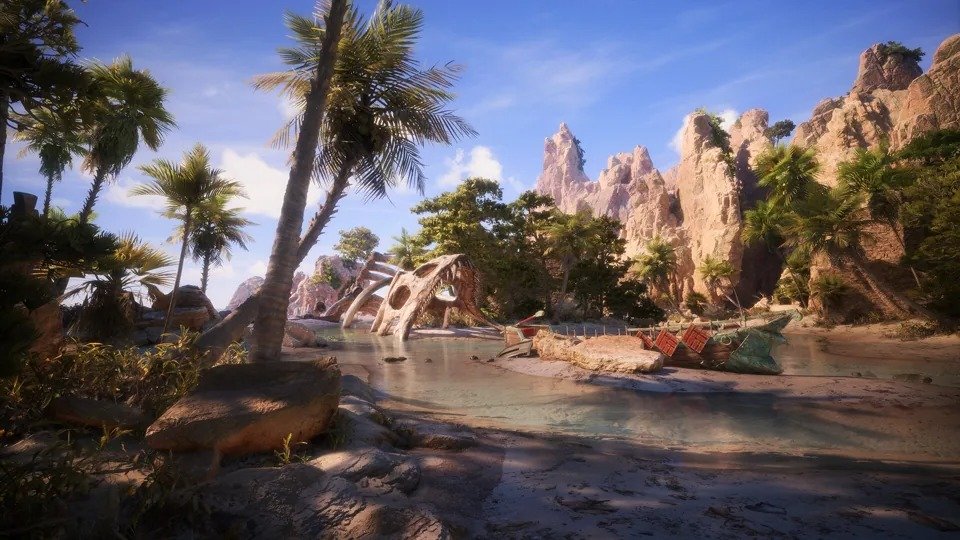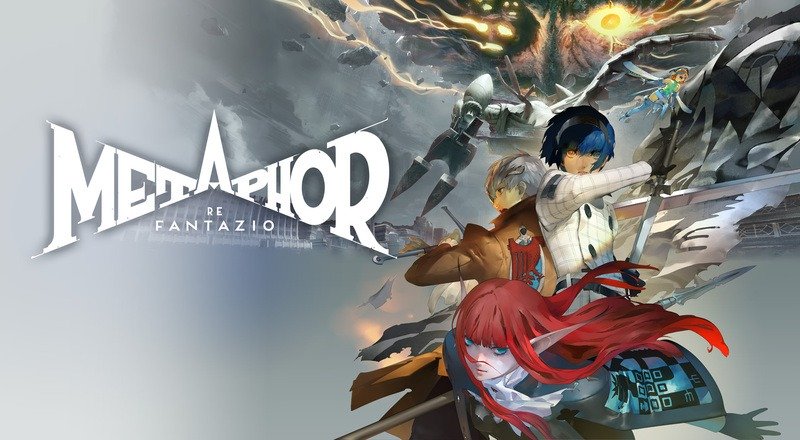Dragon Age: The Dread Wolf - Early Impressions and Gameplay Highlights
Since the release of Dragon Age: Inquisition, a decade has passed by unconsciously, and the expectations for the new series installment, Dragon Age: The Dread Wolf, seem distant. In these ten years, much has changed. BioWare went through layoffs, and this game sparked some controversies when it was officially announced in June this year. All these circumstances make me anxious about this highly anticipated game for this year.

But what worries me most are the early gameplay demonstrations, as they seem to suggest that this game might develop into a linear-action game style, rather than the more open-world approach of its predecessor. Although it’s well known that every Dragon Age game changes its style, I sincerely hope it won’t lose too much of the "essence" that I so dearly love from Dragon Age.
However, after two days of hands-on experience, I felt relieved. This game left me with more excitement and curiosity, and most importantly, I can finally set aside my previous concerns.
During this trial session, I experienced all aspects of The Dread Wolf, including an incredibly in-depth character creation system (more on that later), opening quests, a faction mission, and a rather deep companion mission later on. But what satisfied me the most was that we finally got to explore Northern Thedas in all its glory, venturing into a region that had previously only existed in Dragon Age lore.

It should be noted that The Dread Wolf is not designed as an open-world playground like Inquisition. As the game director Corinne Busche previously mentioned, the maps are more "mission-based." However, the first few hours of the game impressed me because players can deeply explore various areas, and the protagonist, Loche, can influence these regions. It's like combining the smoother gameplay from Dragon Age II with the rich terrain and sociopolitical environment from Inquisition.
Of course, there have been more significant adjustments in terms of the game's artistic style, combat mechanics, and overall gameplay, and how you feel about it depends on personal preferences. But after playing Dragon Age: The Dread Wolf, I feel that this long ten-year wait might just have been worth it.
Get to Know Your Companions

As fans saw in the first gameplay demo, during Solas' ritual to destroy Thedas, the protagonist and their companions immediately took action, heading to Minrathous City. Fortunately, our old friend Varric recruited you as an ally, and the game quickly shifted focus to the protagonist, Loche. After Varric's brief but concise rundown of the situation, the game started leading players into the tutorial.
The first thing to learn, of course, was combat. The CRPG-style tactical system of Dragon Age: Origins is long gone, and now the game offers a faster-paced combat style. At the same time, players can actively pause and bring up a radial menu interface. While this gameplay does take some time to adapt to, and you will need to learn all the different skills of your companions and create a personalized team configuration, I found myself quickly getting into it.

During my trial session, I primarily used a mage and rogue setup, and I soon became dependent on certain companion skills. For instance, the mage's healing skills are essential (especially when facing tough elite enemies), so I often relied on Bellara's spells for healing. If the situation became too dire, I'd retreat and maintain a safe distance.
Naf possesses a skill that slows down time, which I particularly enjoy. Whenever the combat pace gets overwhelming, this skill helps me regain control of the situation. If you prefer a "glass cannon" build, it's best to have a warrior companion nearby to taunt enemies and draw their aggro.
Like other aspects of The Dread Wolf, combat revolves around you and your companions, even though you can’t fully control them as you could in previous Dragon Age games. Different companions have unique combination skills, and players have the opportunity to develop team synergy. Oh, and it's best to listen to your companions during combat, as they might occasionally provide useful tips.

Besides combat, your dialogue choices, Loche’s background (related to one of six factions you can choose from), and the decisions you make are crucial. This design shouldn't be surprising to veteran BioWare players. Naturally, the dialogue wheel is back, and the companion approval/disapproval system returns as well. However, I was pleasantly surprised to find that The Dread Wolf clearly explains the consequences of some dialogue choices, similar to the "so-and-so will remember that" system but more specific.
For example, during my first confrontation with Solas (also known as Fen'Harel, the Dread Wolf), I chose a sarcastic and humorous approach, and when we finished our confrontation, a line of text appeared on the screen: "You had a heated exchange with Solas." This wasn't an isolated occurrence, and I’m curious about how different attitudes will impact relationships with various characters as the game progresses.

Speaking of choices, I soon realized that The Dread Wolf contains numerous decisions with lasting effects. The ones I’ve mentioned here might be obvious, but I feel that this game has even more branching choices compared to past BioWare games.
For instance, I made a decision early in the game that caused Harding to get injured, and she ended up with a bruised face for several hours afterward. I felt incredibly guilty, like a jerk, which is probably the point. It seems that Dragon Age: The Dread Wolf wants to make me realize from the start that I'll be making plenty of "jerky" decisions later on. I can’t spoil much, but you can observe some of your progress and choices through changes in your surroundings.
After the tutorial phase, it's time to explore the vast world of Thedas, to see how its past and present intertwine.
Crossing the Veil, Delving into This World

As mentioned before, one of my biggest concerns was that The Dread Wolf might adopt a more linear design with a straight-line experience rather than branching gameplay. Apart from a few key decisions you must make, the first few hours (mostly the tutorial) do feel a bit like moving along a fixed track. But once you pass this phase and settle down in Chapter 1, you gain more freedom, unlocking more areas as the story progresses.
You’ll need to use "Crossroads" to achieve this. For those not familiar with Dragon Age, "Crossroads" are points of connection between the physical plane of Thedas and the Fade, where ancient elves traveled via magical mirrors called "Eluvians." You can now use Eluvians for the same purpose, and to unlock new areas, you must first fight in specific regions of the "Crossroads" before fast-traveling to your destination.

Unlocking these areas will open up a vast network of paths. Unlike previous Dragon Age games, these areas differ significantly from each other. Take the Orlasian Forest, for example, a vibrant region that blends lush greenery with elven magic.
You can see rabbit-pigs digging in the meadows, behold the wonders of ancient magical relics, and enjoy plenty of natural scenery. However, if you head to Hossburg, you'll feel an entirely different atmosphere shift, as this place is currently affected by the Blight, with more horror-game-style designs, portraying the Blight's decay.

While The Dread Wolf has an overall high fantasy tone, including features like the "Crossroads," there’s no need to worry. Players who miss the blood and dark fantasy elements from Origins can still find that feeling in Blight-infested regions.
Yet, I couldn’t resist spending lots of time exploring Treviso City, the bustling headquarters of the Antivan Crows. Firstly, experiencing a vibrant city itself feels like a novelty in the Dragon Age series. Plus, there’s so much to explore that I kept getting sidetracked from the main quest.
You might encounter a merchant selling unique items, pick up a new quest by accident, or engage in random battles in the alleyways. I hadn't even started looking for cats and dogs when I stumbled upon so much (yes, you can pet cats and dogs in this game).

Apart from cats and dogs, there are other unique ways to interact with the environment. Each companion has an environmental interaction skill, and some skills are incredibly useful to me. For example, while exploring the Orlasian Forest, I frequently called on Bellara because her skill allowed her to interact with various magical artifacts.
The other convenient aspect is that your companions don’t even need to be in your party to use these skills. By the way, there’s another little feature I love: if a companion’s casual chat gets interrupted by combat, cutscenes, or other events, they’ll pause their conversation and resume it after the interruption ends. Finally, we no longer need to awkwardly stand still to hear the complete dialogue.

If you feel lost while playing, you can take advantage of the game’s difficulty options and various auxiliary features to adjust according to your needs. For instance, in an Antivan Crow faction mission I took on, I could either navigate straightforwardly using the game’s guidance or turn off navigation and look for clues in the environment—like finding purple Crow markings on walls in this particular mission. Incidentally, I was playing a protagonist with an Antivan Crow background, which triggered some interesting dialogue choices.
As I delved deeper into the game, I became more aware of how The Dread Wolf has improved upon many features, and it’s evident the developers listened to player feedback. For example, they addressed the map design issue that players heavily criticized, especially in the first open-world area of Inquisition, where you were overwhelmed with over fifty side quests, many of which were simple fetch quests, ultimately drowning players in countless tasks unrelated to the main story.

The Dread Wolf's maps are more contained, and tasks are more directly tied to world-building and lore, giving more weight to each activity.
Overall, this early demo of Dragon Age: The Dread Wolf left me eager for more. Although certain aspects of the game differ from previous Dragon Age titles, it still captures the essence of the series in ways that will surely excite longtime fans.




